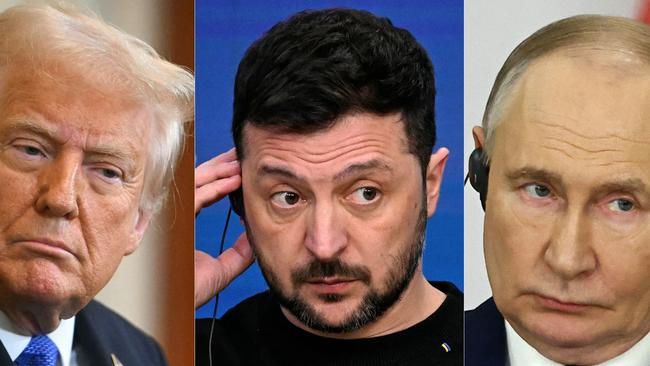
The Western alliance is not at the break-up stage but the romance is fading, the shared objectives are shattering and distrust is poisoning the relationship.
Disagreements are inevitable, but a new question is being raised as the result of the Trump 2.0 revolution and its promotion of an aggressive “America First” agenda: can the growing divides between Washington and Europe still be bridged?
The immediate fork in the road is strategic, with attention focused on how the war in eastern Europe can best be ended.
America has disregarded European concerns by inviting Russia back in from the cold to kickstart negotiations while testing the water on a deal that would keep Ukraine out of NATO and concede major territorial gains to Vladimir Putin.
This is a heavy blow to Ukraine, but the question is swiftly shifting to whether America will offer its own guarantee to Kyiv.
Already Volodymyr Zelensky has rejected an extraordinary US proposal to obtain a 50 per cent stake in Ukraine’s vast mineral resources in return for support, because the offer came with no American assurances on security.
“I do not believe in security guarantees without America,” the Ukrainian President said at the weekend.
Britain’s Keir Starmer also says a US guarantee is the only way to ensure military deterrence of Russia moving forward.
Europe and Ukraine are panicked by the prospect of any peace agreement being taken out of their hands, with neither being given a seat at the negotiating table in Saudi Arabia this week where Russia and the US will begin discussions.
The fear is that Donald Trump – a transactionalist not as committed to multilateral security alliances – will strike a deal with Vladimir Putin and seek to impose its terms while heaping responsibility for Ukraine’s security on to Europe, as he shifts his focus elsewhere.
European leaders are now holding their own negotiations, with a meeting in Paris on Monday failing to make headway amid divided views on whether troops should be committed to Ukraine to enforce a potential ceasefire.
There is now a real risk of US and European strategic interests diverging.
The trajectory of European-US relations may be permanently altered as a result of the decisions being made now.
On top of this, trans-Atlantic tensions have further been heightened by Trump threatening to drag Europe into his global trade war and revisiting the possible acquisition of Greenland – a territory that belongs to Denmark, a founding NATO member.
Beyond the clashes over strategic and economic policy, the differences with Europe have been further compounded by the US identification of a new divide over democratic values.
US Vice-President JD Vance directly challenged Europe over its commitment to democracy and free speech at the weekend in comments that were seen by many leaders as an intervention in domestic political matters.
Speaking at the Munich Security Conference, Vance opened a new front by warning the biggest risk to security on the continent comes not from China or Russia, but from Europe itself.
“I’d ask my European friends to have some perspective,” he said.
“You can believe it’s wrong for Russia to buy social media advertisements to influence your elections. We certainly do. You can condemn it on the world stage.
“But if your democracy can be destroyed with a few hundred thousand dollars of digital advertising from a foreign country, then it wasn’t very strong to begin with.”
Vance warned this democratic weakness was the result of Europe retreating from “some of its most fundamental values, values shared with the United States of America” and engaging in censorship of political opponents.
This was not the right time to pick a fight with Europe.
Vance’s comments ignited a furious reaction, with a rebuke from German Chancellor Olaf Scholz ahead of his country’s elections this Sunday, and left the impression the Trump administration was aligning itself with political forces on the European far right.
America and Europe appear to be drifting further apart and an approach by Washington of confrontation rather than partnership must raise questions about how the trans-Atlantic partnership will work in a new and uncertain era.




The US and Europe risk falling out of alignment.